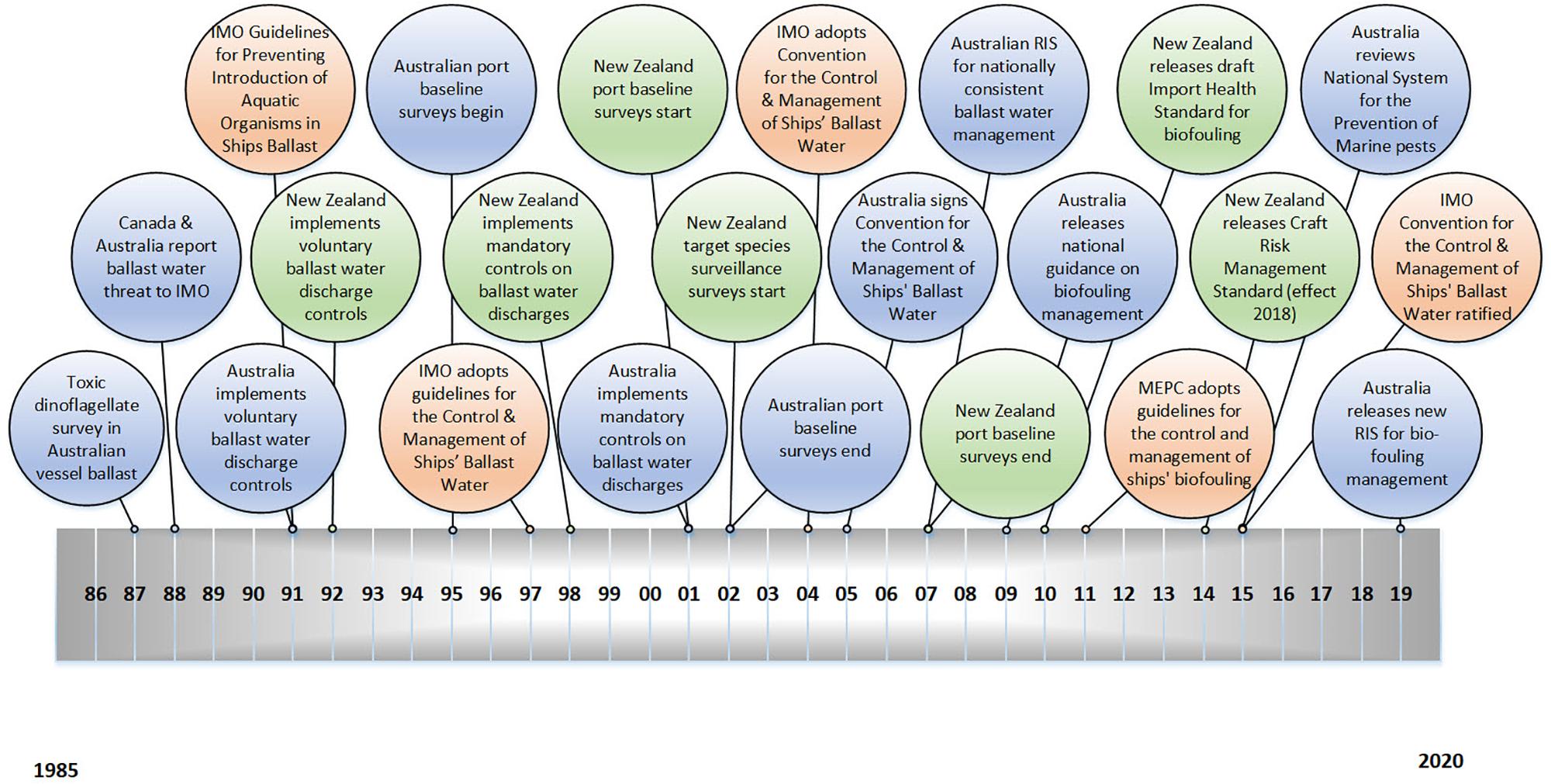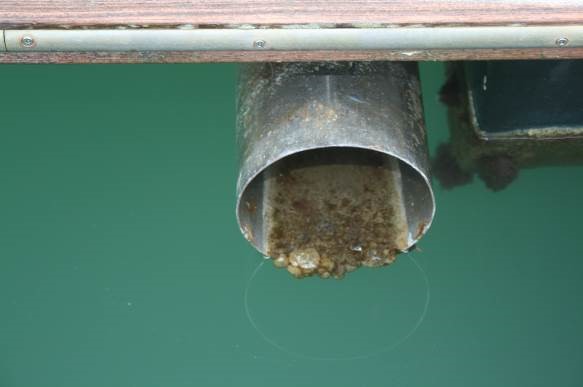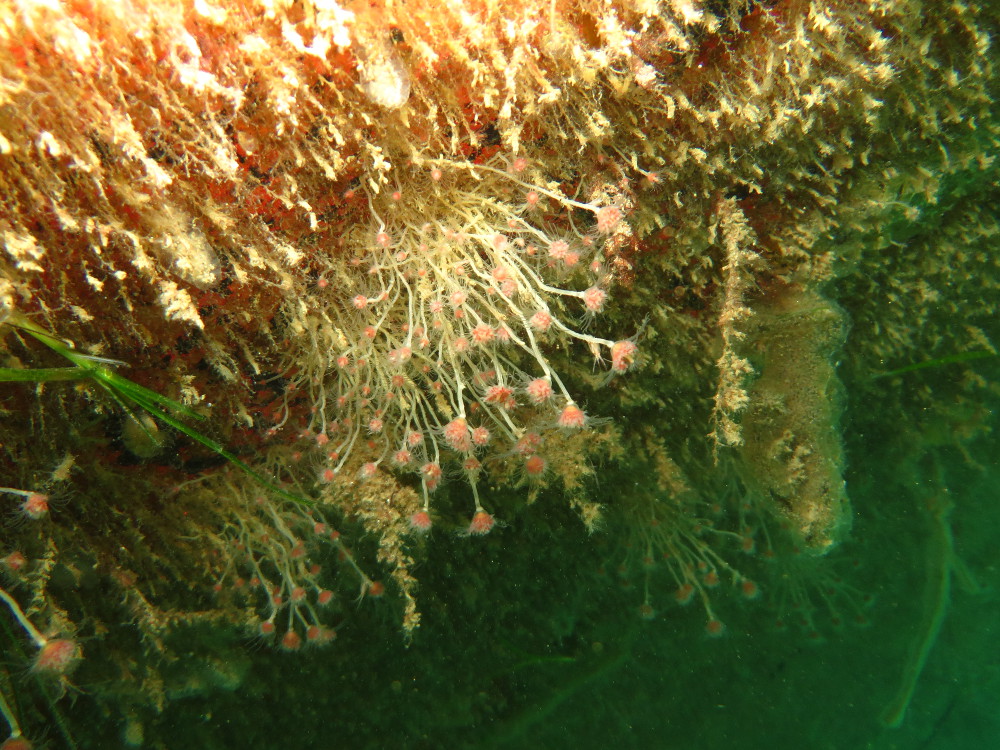Pathway risk management
Non-native marine species can be spread by humans in a variety of ways ('pathways'), including within ships' ballast water or biofouling, through movement of aquaculture equipment or stock and even through the marine aquarium trade. Their impacts on New Zealand's marine environments can be minimised by reducing the rate at which they are transported. This research focuses on reducing risks within national and international pathways for the spread of marine pests.

Timeline of major international (orange)...
An ANZAC perspective on the management of marine biosecurity risks from shipping
22 Jan 2020
12:00 AM
The International Convention for the Control and Management of Ships' Ballast Water and Sediments (B...

[Image: Terry Hann]
Biosecurity in Aquaculture
10 Apr 2018
12:00 AM
New Zealand's geographical isolation and border controls have kept us relatively free from the pests...
Can marine pests be transported and spread in bilge water?
16 Jan 2018
12:00 AM
Bilge water is water that is not deliberately pumped on-board a vessel, but which accumulates within...

Colpomenia spp. in the outlet of an engi...
Reactive treatment of biofouling in vessel pipework
01 Sep 2017
12:00 AM
Biofouling within enclosed vessel spaces can be easily overlooked, but may present significant biose...

[Image: Chris Woods, NIWA]
Testing framework and performance standards for in-water removal or treatment of vessel biofouling
30 Aug 2017
12:00 AM
It is often not practical to remove large vessels from the water to clean or treat the biofouling th...

[Image: Chris Woods, NIWA]
Biosecurity risks associated with in-water and shore-based hull cleaning operations
30 Aug 2017
Biofouling that is removed from vessels can still be a biosecurity threat if it is not contained and...




